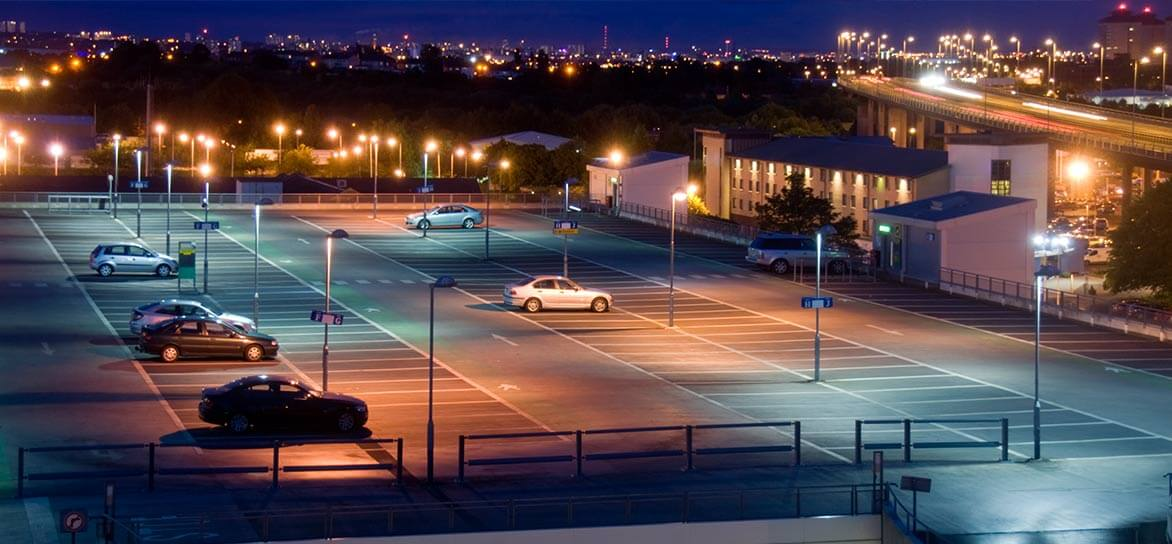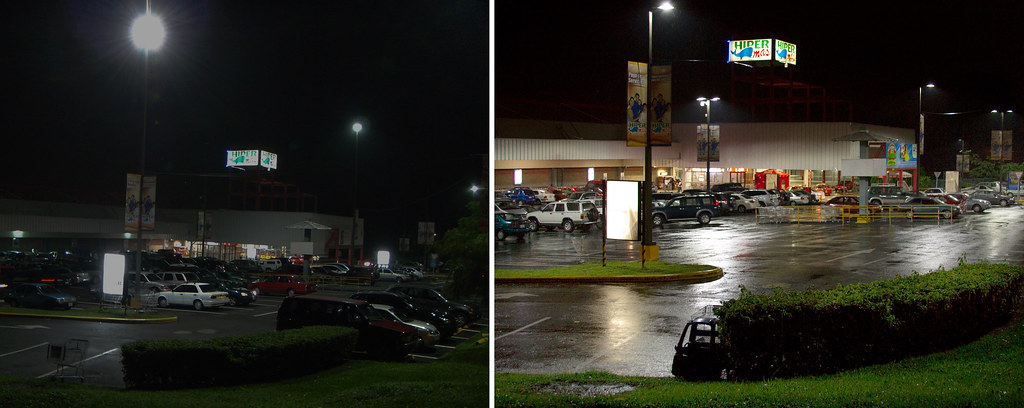LED Pole Lights are mostly outdoor lights that are generally mounted on poles and located in parking lots and driveways. They provide optimum brightness for vehicle and visitors’ use.
Most of the existing parking area lights use high-intensity discharge (HID) lamps such as metal halide and high-pressure sodium, which generally consume much power. Another reason is that these lights are primarily active in the nighttime and are not cost-friendly.
Switching to LED Pole Lights reduces power consumption substantially, and it’s best for illuminating larger spaces. These lights are beneficial for facility managers and building owners in terms of maintenance and energy consumption.
LED Parking Lot Lights

Outdoor LED lighting is available in a variety of fixtures. Including area lights for outdoors and wraparounds for the indoors. They are energy-efficient and cuts down power consumption by 75%. They require less maintenance and provide better illumination, making your parking lot and driveways safe and accident-free. Let’s discuss some advantages of switching to LED parking lot lights.
- Wattage: Whereas wattage use of HID lights is between 400 watts to 1000 watts, LED wattage usage comes between 40 watts to 600 watts. So LED lights are more cost-effective than traditional fixtures.
- Power cost: The introduction of LED technology for outdoor has provided a significant difference in power costs than traditional fixtures. In 2014, The Department of Energy evaluated that US businesses have slashed energy costs by 90% by switching to LED lights.
- Easy to maintain: Compared with the traditional metal halides, LED lights do not need continuous ballast replacement or bulb change, making them cost-effective for business owners. Another reason is that they have a functional life of more than 50,000 hours and a reasonable warranty period.
Additional accessories:
New generation LED pole lights to have extra accessories like photocell and motion sensors. Photocells sensors automatically switch on and off pole lights following natural lighting. Motion sensors can detect movement in the darkness and deter any unauthorized entry into the premises. Bright lights have become an essential part of our parking lots since they generate a sense of safety among the visitors. They brighten the place to provide clear visibility among the visitors. If you are a business owner, then you should give severe thought to choosing LED lights for your parking areas against traditional fixtures.


